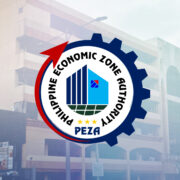How an interest rate cut could lead to market decline

The relationship between the exchange rate and the stock market can significantly influence market behavior. A weakening peso often leads to a decline in the stock market.
When the peso weakens against the dollar, it means that the peso has less purchasing power. This depreciation can have several adverse effects on the stock market.
One risk is the increase in financial burden for companies with dollar-denominated debts. When the peso weakens, the cost of servicing foreign-denominated debt increases. This can affect a company’s balance sheet, as it needs more pesos to repay the same amount of dollar debt, leading to higher financing costs and reduced net profits.
A weakening peso also makes imported goods and services more expensive. For a country that relies heavily on importation of raw materials, fuel and even agricultural crops, this can lead to higher costs for businesses and consumers.
When the cost of raw materials and other finished products rises, production costs also increase. These higher costs are often passed on to consumers in the form of higher prices, which can potentially result in higher inflation.
Even companies with international operations can be affected by a weakening peso. While revenues generated abroad might increase in peso terms, the overall impact on profitability can be negative if the costs associated with foreign operations rise faster than revenues.
Historically, the peso-dollar exchange rate tends to move inversely with the stock market. When the peso appreciates against the dollar and the price of the dollar decreases, the stock market often rises.
Conversely, when the peso depreciates against the dollar and the price of the dollar goes up, the stock market generally falls.
However, the strength of this relationship varies, lasting from a few weeks to several months. The negative correlation between the peso and the stock market is strongest when the exchange rate is highly volatile.
But when the peso is stable, the correlation considerably weakens.
For example, before the pandemic, the exchange rate was fairly stable, with the peso depreciating slowly from 49.8 per $1 at the beginning of 2017 to 50.6 by the end of 2019. This 1.6-percent depreciation hardly affected the stock market.
Instead of causing a decline due to a weaker peso, the Philippine Stock Exchange Index (PSEi) gained 13.9 percent.
During this time, the negative correlation between the peso and the stock market was very low, at only 7.5 percent.
But during the 2020 pandemic, the negative correlation increased to 48.5 percent. The peso appreciated strongly against the dollar due to falling demand for imports, causing the dollar to drop from 51 to 48:$1. This currency appreciation helped boost the stock market, which gained 54 percent by year-end.
As economy gradually returned to normal in the next two years, the negative correlation increased further to 72.6 percent as the volatility in the exchange rate continued. The increase in demand for dollars caused the peso to depreciate to 55.8:$1 by end of 2022. The rise in the price of the dollar caused the PSEi to fall by 7.4 percent.
Although the negative correlation last year decreased to 53.7 percent, the peso remained volatile, reaching 57:$1 at one point during the year. This volatility caused the PSEi to lose 4.6 percent by year-end.
This year, the exchange rate continues to be highly volatile with the peso falling by as much as 6.1 percent, from 55.5 in January to 58.9:$1 last month. Given the current negative correlation of 63 percent and the potential for an interest rate cut, market history indicates that further depreciation of the peso could drive the PSEi to lower levels.
An interest rate cut could exacerbate this trend by making the peso even less attractive, leading investors to seek higher returns in other currencies. As investors move their funds out of the peso, the demand for the peso decreases, leading to its depreciation.
Financial markets often react to changes in interest rate policies based on expectations. If investors anticipate that a rate cut will weaken the peso, they may preemptively sell off their peso holdings, which could accelerate its depreciation. The volatility in the exchange rate can create an uncertain investment environment.
When the peso weakens and fluctuates unpredictably, it adds a layer of risk to investment strategies. Many companies might delay or scale back expansion plans, and investors might adopt a more conservative approach, reducing their exposure to equities.
This cautious behavior can lead to reduced trading volumes and lower stock prices as investors may also demand higher risk premiums for holding stocks, which can further depress market valuations.



















